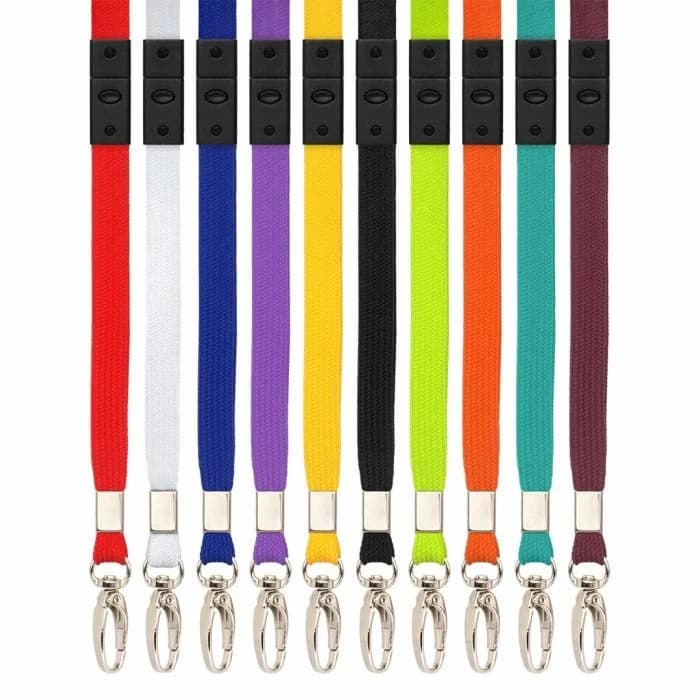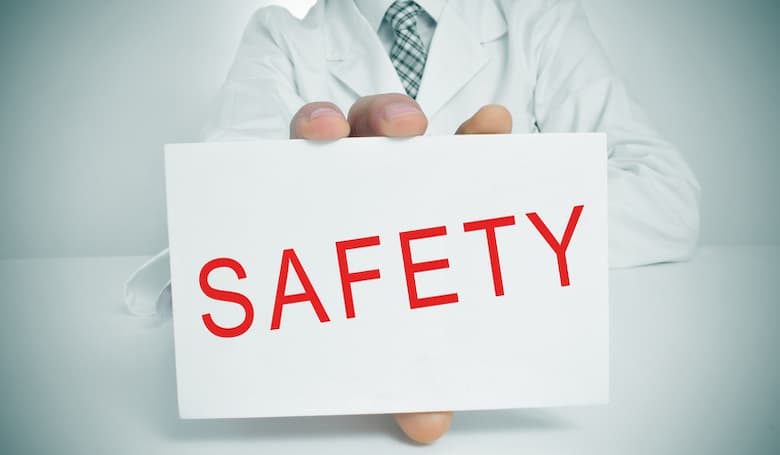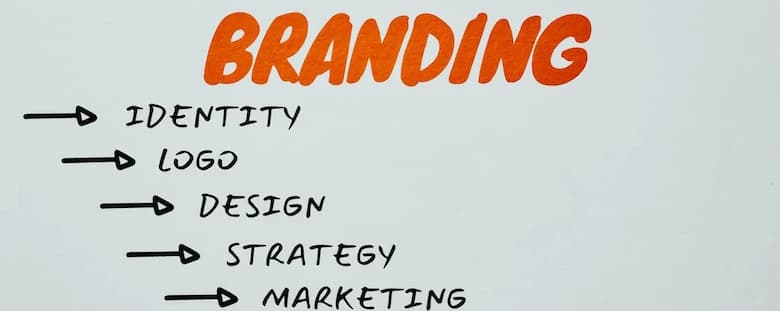
24 January, 2024
Lanyards for Medical Staff: Safety, Convenience, and Hygiene
Lanyards are commonly used in various professions for carrying identification badges, keys, or other small items. However, in the medical field, lanyards are more than just a convenient accessory; they must meet specific safety and hygiene standards to protect the medical staff and the patients. Here we discuss the special requirements for lanyards in healthcare settings, such as breakaway mechanisms for safety and materials that are easy to clean.
Safety First: The Importance of Breakaway Lanyards

The hectic and unpredictable nature of healthcare settings cannot be overstated. Medical professionals are constantly in motion, rushing from one patient to another, navigating through corridors filled with medical equipment, and sometimes needing to respond to emergencies at a moment's notice. In such an atmosphere, anything that could potentially hinder movement or pose a safety risk is unacceptable. If caught on an object or grasped by a confused or agitated patient, traditional lanyards could lead to dangerous scenarios. This makes the breakaway feature indispensable in lanyards used within healthcare environments.
Types of Breakaway Mechanisms
Breakaway lanyards come with different types of mechanisms to ensure quick and easy detachment. The most common types are:
1) Magnetic Breakaway
How it Works: Magnetic breakaways utilise magnetic connections at certain points along the lanyard, often close to the back of the neck or at the front where an ID card or keys might hang. When a force exceeding the magnetic attraction is applied, the two magnets separate, allowing the lanyard to break away freely.
Advantages:
- Easy Reattachment: One of the major benefits of magnetic breakaways is the ease with which they can be reconnected. The magnets simply snap back together, making it quick and efficient for medical staff to resume their tasks.
- Less Wear and Tear: Because no clips or hooks can be manipulated, magnetic breakaways often last longer.
- Elegant Design: These breakaways often offer a sleek and unobtrusive design, making them ideal for settings where appearance is also a consideration.
Drawbacks:
- Less Force Needed: The amount of force needed to break the magnetic attraction may be less than other types, potentially resulting in accidental detachments.
- Cost: Magnets can be more expensive than other types of breakaway mechanisms, increasing the overall cost of the lanyard.
2) Clip Breakaway
How it Works: Clip breakaways use plastic or metal clips that are designed to release when subjected to a strong pull. These clips often operate like a buckle, snapping apart when force is applied.
Advantages:
- Durability: Particularly with metal clips, this type of breakaway is often very durable and can withstand repeated use without failing.
- Strong Hold: Clip breakaways usually require more force to detach, reducing the chance of accidental separations.
Drawbacks:
- Reattachment Time: Depending on the design, clips may take a moment longer to reattach, which can be cumbersome in emergency situations.
- Wear and Tear: Continued use of clip mechanisms can result in wear and tear, potentially affecting its reliability over time.
3) Velcro Breakaway
How it Works: Velcro fastenings employ 'hook and loop' technology to keep the lanyard in place. When enough force is applied, the Velcro strips separate, allowing the lanyard to break away.
Advantages:
- Quick Detachment and Reattachment: Velcro is quick to separate and easy to reattach, making it highly efficient for fast-paced medical settings.
- Adjustable Tension: The fastening strength can often be adjusted by changing the amount of Velcro in contact, offering a bit more customisation in how easily the lanyard breaks away.
Drawbacks:
- Durability: Over time, Velcro can collect lint, dust, or fibres, which can reduce its effectiveness. This requires regular cleaning or replacement.
- Accidental Releases: Given that Velcro can be less secure than other methods, there's a higher chance of accidental detachments if not appropriately maintained.
By understanding the ins and outs of these breakaway mechanisms, healthcare facilities can make more informed choices, ensuring both the safety of their staff and the compliance with relevant safety regulations.
Safety in Various Scenarios - A Detailed Look at Risks and Precautions

1) Patient Interaction
The Risk: When medical professionals lean over patients to administer medication, check vitals, or perform procedures, there's a significant risk that their lanyard could become entangled with either the patient or surrounding equipment. In the worst-case scenario, this could pose a choking hazard.
Precautions:
- Use of Short Lanyards: Using shorter lanyards can minimise the risk of entanglement.
- Breakaway Feature: Lanyards with breakaway features can quickly disconnect, averting potential choking hazards.
- Awareness Training: Staff should be trained to be conscious of their lanyard during close patient interactions, ensuring it doesn't interfere with their work or patient safety.
2) Equipment Handling
The Risk: Medical equipment can be intricate and sensitive. A lanyard caught in the machinery can harm the individual and lead to equipment malfunctions, affecting patient care.
Precautions:
- Lanyard Length: Again, shorter lanyards could be beneficial in reducing the risk of entanglement with equipment.
- Retractable Lanyards: These allow for ID badges or keys to be pulled closer to the equipment without the lanyard itself getting in the way.
- Regular Safety Audits: Routine checks can ensure that lanyards are in good condition and are compliant with safety protocols.
3) Emergency Response
The Risk: Emergencies require rapid action. A lanyard snagging on a door handle or other obstacles could cost precious seconds, impeding effective emergency response.
Precautions:
- Smooth Design: Opt for lanyards without protruding elements that can catch onto objects.
- High-Quality Breakaways: Ensure that the breakaway feature is highly responsive to enable quick separation in case of snags.
- Emergency Drills: Incorporate lanyard safety into emergency response drills so that medical staff are adeptly trained to manage such challenges.
4) Conflict Situations
The Risk: Medical staff sometimes encounter agitated or uncooperative patients. In such situations, a lanyard could be seized and used as a means to inflict harm.
Precautions:
- Immediate Breakaway: Lanyards with quick-release mechanisms can be beneficial in these cases to prevent staff from being pulled or choked.
- Conflict Training: Medical personnel should be trained in de-escalation techniques that include how to react if someone tries to grab their lanyard.
- Monitoring and Support: Surveillance and quick access to security can also deter such incidents and provide prompt assistance if they do occur.
By considering these various scenarios and implementing the appropriate precautions, healthcare settings can mitigate the risks associated with lanyard use, thereby enhancing staff safety and patient care.
Training and Awareness

In the hustle and bustle of a healthcare environment, the use of safety features like breakaway lanyards can easily be overlooked. However, failure to use these features effectively could negate their purpose, making training and awareness crucial components of lanyard safety.
Importance of Regular Training Sessions
- Skills Update: Medical staff are typically well-versed in clinical procedures but may not give much thought to the seemingly minor issue of lanyard safety. Regular training sessions can serve as a necessary reminder to always engage the breakaway features and how to reattach them.
- Best Practices: Training can also cover the best practices in lanyard safety, from the correct way to wear them to proper maintenance to ensure they function as intended.
- Emergency Response: Training sessions should include scenarios where medical staff need to respond quickly, teaching them how to avoid lanyard snags and what to do if a breakaway is triggered.
Components of Effective Training
- Hands-on Demonstrations: Actual demonstrations using different types of breakaway lanyards—magnetic, clip, and Velcro—can help staff understand how each type functions.
- Scenario Simulations: Role-playing activities can simulate various situations, such as patient interactions and emergency responses, to practice safe lanyard use.
- Testing: A small test or quiz at the end of the training session can help gauge the effectiveness of the training and identify areas that may need more emphasis.
- Feedback Loop: Providing a channel for staff to report any difficulties they encounter with using lanyards allows for continuous improvement.
Reiteration and Refreshers
- Regular Scheduling: Lanyard safety should be reiterated regularly, with refresher courses offered at least annually or semi-annually.
- Updates: If there are any changes in lanyard types or safety guidelines, additional training sessions should be scheduled as soon as possible to keep everyone updated.
- Compliance Checks: Periodic checks can help ensure that all staff wear their lanyards correctly and know how to use the breakaway features.
Through consistent and effective training, healthcare institutions can ensure that safety protocols around lanyard use are well-understood and diligently applied. This multi-faceted approach goes a long way in mitigating risks and safeguarding both staff and patients.
Regulatory Compliance

The use of breakaway lanyards in healthcare settings is not merely a suggestion but often a legal requirement. Occupational health and safety regulations typically mandate these safety features to mitigate risks associated with choking, entanglement, and other potential hazards.
Legal Frameworks Governing Safety
- National and Local Regulations: Depending on the jurisdiction, healthcare facilities may be subject to national, state, or local regulations that specify the use of safety features like breakaway lanyards for staff.
- Industry Standards: Beyond governmental regulations, industry-specific guidelines may also set forth recommendations or requirements for lanyard safety. Following these guidelines can be equally important.
- Accreditation Bodies: Compliance with safety measures can be a condition for accreditation by healthcare oversight organisations. Failure to comply could result in the loss of accreditation status, affecting the institution's reputation and potentially its funding.
Consequences of Non-Compliance
- Legal Repercussions: Non-compliance with mandated safety measures can result in fines, sanctions, or even lawsuits. This affects the healthcare facility's finances and can impact its credibility and public trust.
- Audit Risks: Regulatory bodies often perform surprise audits to ensure health and safety guidelines compliance. A failure in such an audit could have severe implications, including temporary or permanent closure of the facility.
- Liability Issues: In the event of an incident involving a lanyard, the absence of a breakaway feature could lead to liability claims. This exposes the healthcare facility to legal and financial risks that could have been easily avoided.
Maintaining Compliance
- Regular Reviews: Compliance teams should review existing policies to ensure they meet all current regulations. Any updates or changes in the law should be immediately incorporated into the facility's safety protocols.
- Staff Training: As part of the compliance strategy, staff should be thoroughly trained in the practical use of breakaway lanyards and in understanding their legal imperatives.
- Documentation: Accurate records of training sessions, safety drills, and equipment checks can indicate compliance during regulatory audits.
- Consultation and Legal Advice: To navigate the complex landscape of healthcare regulations, consulting with legal experts specialised in healthcare law may be prudent. They can provide valuable advice on compliance matters and potential risks.
By aligning with regulatory standards and focusing on compliance, healthcare facilities can protect their staff and patients and shield themselves from potential legal complications. The importance of using breakaway lanyards extends from practical safety considerations to fulfilling legal obligations.
Material Considerations: Ease of Cleaning and Durability
The lanyard material is paramount in a healthcare environment where the risk of cross-contamination is high. The lanyard must be able to endure frequent cleanings without losing its structural integrity. It should also be non-porous to avoid harbouring bacteria or viruses.
1) Silicone: This is a popular choice for healthcare settings due to its hypoallergenic properties and resistance to bacterial growth. Silicone can be easily wiped down with disinfectant solutions and is durable enough to withstand daily use and cleaning.
2) Vinyl: A robust and cost-effective material, vinyl is easy to clean and water-resistant. However, it may not offer the same level of comfort as other materials, especially when worn for an extended period. It's essential to ensure that the vinyl used is free from harmful chemicals like phthalates.
3) Antibacterial-Coated Fabrics: These specially treated fabrics inhibit the growth of bacteria and other microorganisms. They can be more comfortable to wear than silicone or vinyl but may require more frequent replacements due to wear and tear.
4) Polyester with Microban Treatment: This type of polyester has been specially treated to resist bacterial growth. It offers the comfort of fabric with the added benefit of easy cleaning.
50 Nylon: While not inherently antibacterial, nylon is relatively easy to clean and quick-drying, making it a feasible option if regularly disinfected.
Durability: Longevity Matters

When selecting a material for lanyards, especially in a demanding environment like healthcare, durability is a key consideration. A lanyard that quickly frays, fades, or otherwise deteriorates poorly reflects professional standards and can compromise safety features like the breakaway mechanism.
1) Tensile Strength: Materials like silicone and nylon offer high tensile strength, making them less likely to snap under pressure.
2) UV Resistance: If staff frequently move between indoor and outdoor environments, UV-resistant materials can prevent them from becoming brittle or discoloured.
3) Resistance to Chemical Exposure: Materials must resist chemical wear since they will be cleaned frequently with disinfectants.
4) Reinforced Stitching: For fabric ones, reinforced stitching can prolong life expectancy by preventing fraying and wear along the edges.
By selecting easy-to-clean and durable materials, healthcare facilities can ensure that their lanyards serve their intended function effectively while adhering to safety and hygiene standards. This dual focus on cleanliness and durability ensures that the lanyard remains a practical and safe tool in the demanding healthcare environment.
Customisation and Branding

Customisation options, such as featuring the facility's logo, motto, or colours, can promote a sense of unity among the staff and offer a cohesive brand image to patients and visitors. When someone walks through the hospital corridors and sees the medical staff with uniform, branded lanyards, it instils trust and reliability.
Points to Consider for Customised Lanyards
1) Visual Elements: When opting for branded lanyards, healthcare institutions have the opportunity to incorporate various visual elements. These can range from the healthcare facility's logo to other insignia, such as department names, enhancing the branding and serving as an additional identification layer.
2) Colour Coding: Using specific colours for different departments or roles can aid in quick identification, especially in large medical facilities where staff members from various departments interact. For instance, neonatal care staff could have them in one colour while emergency room staff in another.
3) Text and Typography: Some include text from the healthcare facility's name to emergency contact numbers or motivational quotes. The typography should be legible and resistant to fading, considering they will be subjected to frequent cleaning.
4) Prioritising Functionality
While the opportunity for branding and customisation is compelling, it's crucial that these aesthetic considerations do not compromise its primary functions of safety and hygiene.
5) Material Compatibility: Any customisation must be compatible with the material, ensuring it remains easy to clean and durable. For example, printing on silicone may require special ink that can withstand sanitisation processes.
6) Maintaining Safety Features: Customisation should never interfere with it's safety features, like the breakaway mechanism. Any added elements, like logos or text, should be strategically placed to ensure they do not impede the lanyard's breakaway functionality.
7) Quality Testing: After customisation, they should undergo rigorous quality testing to ensure that all safety features remain intact and that the material can withstand the added wear and tear that may come from the branding elements.
By thoughtfully incorporating branding elements while focusing on functionality, healthcare institutions can achieve the best of both worlds. A well-designed one can serve as a unifying symbol among staff members while adhering to the medical environment's crucial safety and hygienic standards.
Conclusion
Lanyards in healthcare settings serve a crucial function and must be selected with care. Features such as safety breakaway mechanisms and easy-to-clean hygiene materials are not just optional but necessary. By paying attention to these specific requirements, healthcare facilities can ensure the safety and well-being of their staff and patients.
The Lanyards Only Team


